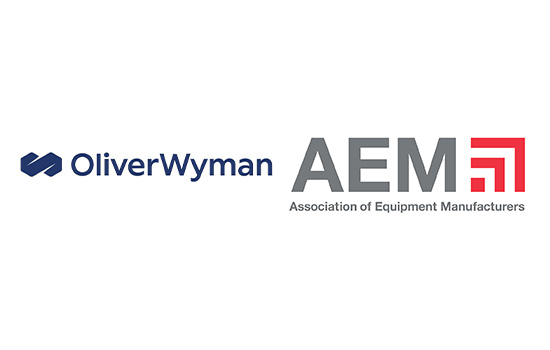Trees, electrical wiring, solar activity, and intentional jamming. All of these factors can cause interferences in the positioning technology of autonomous machines in agriculture – a process in which precision and reliability are priorities.
"It's important to understand that the equipment's positioning must be accurate, with a margin of error of just a few centimeters. After all, more than that can cause immeasurable losses in crop productivity, production and delivery,” said James Szabo, senior product manager - agriculture autonomy at Hexagon | NovAtel, an AEM member company and global pioneer in precise positioning solutions for land, sea, and air.
The end users of agriculture robotics are looking to increase the efficiency of their operation, however, they have no idea how the machine works, only that it does what they need it to do. NovAtel has been working with many robotic developers, solving positioning problems that they never expected. To ensure precision during operations, antennas and receivers that capture and process satellite signals need to consider all possible errors to avoid impeding them.
Szabo talks about some of these challenges below:
Trees and Electrical Wiring
The presence of trees or electrical wiring can cause problems for autonomous agricultural machinery, causing them to lose GNSS signal from a few seconds to a few minutes. Without a reliable position, machines will stop, requiring operator intervention to get them going again. “By integrating an inertial measurement unit (IMU) with a GNSS receiver and NovAtel’s proprietary SPAN technology we can gain a short time of GNSS limited operation, enough to overcome the majority of short-term position outages resulting in greater machine uptime, while still maintaining accuracy,” explained James.
Machine Heading
"It's one thing to define the positioning of the machines in the field, but it's another to be able to understand where they're headed at a low speed of just a few centimeters per minute," Szabo explained. A machine must know it’s heading to operate autonomously, but to get that data, operators had to manually move the machine at a high enough speed for it to register. By adding a second SMART antenna and NovAtel’s ALIGN technology, machines can access their heading data at all times, even when stationary or at slow speeds, reducing operator involvement. "The dual antenna solution triangulates exactly where the machine is and where it is going," he said. This is essential for the understanding of the autonomous machine's orientation, which is particularly important when starting and stopping as well as when operating close to field boundaries.
Intentional Interference and Jamming
GPS signals are weak and susceptible to interference and intentional jamming by the time they reach the Earth’s surface. "Intentional interference or jamming can originate from readily available, low power vehicle tracking jammers to complex technology used by the military. While the range and scale of the interference differ between the two technologies, both can lead to errors in the positioning of autonomous agricultural machinery and other civilian uses of GNSS.” Detecting interference is the first step to mitigating it and with tools like the NovAtel Application Suite (NAS) and Interference Toolkit (ITK) robotics developers can address interference sources.
Ionospheric Scintillation
The entry into a new peak of solar flares has caused headaches for those who rely on precision agriculture. Ionospheric scintillation is a phenomenon that involves rapid and irregular variations in the intensity of radio frequency signals that travel through the ionosphere, a region of the Earth's atmosphere that contains ionized particles, which refract and diffract radio signals, such as those used in GNSS.
These variations in the intensity of radio signals occur due to disturbances in the concentrations of free electrons in the ionosphere, which can be influenced by various factors, including solar activity, geomagnetic events and weather conditions in the upper atmosphere. To mitigate the impacts, there are multiple GNSS correction service options, such as PPP (Precise Point Positioning). These alternatives aim to increase positioning accuracy for high-precision applications and create different levels of resilience against ionospheric interference. "However, it can still affect these services, causing errors in receiver position calculations. In RTK systems, which rely on carrier phase measurements, scintillation can drastically impair positioning accuracy, especially at greater distances from the base station," Szabo pointed out.
While the positioning of autonomous agriculture machines may seem simple, solutions need to consider each challenge and how to mitigate them. Due to the high level of complexity in its development, agricultural equipment manufacturers must seek the highest degree of confidence in their positioning solution to deliver a complete and functional solution to the final consumer: the farmer.
Subscribe to the AEM Industry Advisor for more perspectives from industry leaders.





